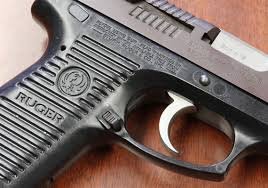By Jordan B. Cohen
In the 1980s, the production of guns made with polymer (industrial plastic) stoked concerns that firearms were becoming undetectable by metal detectors in places like airports and federal buildings. In response, Congress passed, and President Ronald W. Reagan signed into law, the Undetectable Firearms Act of 1988 (UFA; P.L. 100-649).
The UFA was codified as 18 U.S.C. §922(p) and prohibits owning, purchasing, importing, receiving, and selling firearms that do not include at least 3.7 ounces of stainless steel. The UFA also prohibits handguns where the barrel, slide or cylinder, or the frame or receiver do not generate an image that accurately depicts the shape of the component when under inspection by the type of x-ray machine commonly used at airports.
The UFA included a sunset clause, after which its provisions will be repealed. The UFA’s sunset has been delayed multiple times, most recently through March 22, 2024 (P.L. 118-40).
History of Undetectable Firearms Act
The impetus for the UFA stemmed from fears that polymer-framed firearms could slip past airport metal detectors. For example, the Glock was invented in the 1980s and is a polymer-framed, semi-automatic pistol. Initially designed for the Austrian military, the Glock’s frame weighs much less than traditional steel-framed firearms and the polymer allows it to better absorb recoil than other handguns.
Some observers framed the Glock as a hijacker’s special, referring to the potentiality that it could pass through airport security undetected. Additionally, in 1986 media reports claimed that the Glock, when dismantled, “is frighteningly easy to smuggle past airport security” and that “one Pentagon security expert decided to demonstrate just how easy it would be to sneak a Glock 17 aboard an airliner.” Though not mentioned in these articles, these same metal detectors and their operators were also often not recognizing pistols made exclusively out of metal.
Beyond concerns over polymer guns, some feared that individuals may attempt to board aircrafts or enter federal buildings with nondescript, gadget firearms or firearms that, when broken into component parts, do not look like traditional firearms—such as “a James Bond-like pen gun.”
Washington, DC: Congressional Research Service, 2024. 3p.




